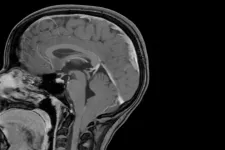(Press-News.org) About one in 100 children has a common brain disorder called Chiari 1 malformation, but most of the time such children grow up normally and no one suspects a problem. But in about one in 10 of those children, the condition causes headaches, neck pain, hearing, vision and balance disturbances, or other neurological symptoms.
In some cases, the disorder may run in families, but scientists have understood little about the genetic alterations that contribute to the condition. In new research, scientists at Washington University School of Medicine in St. Louis have shown that Chiari 1 malformation can be caused by variations in two genes involved in brain development.
The condition occurs when the lowest parts of the brain are found below the base of the skull. The study also revealed that children with unusually large heads are four times more likely to be diagnosed with Chiari 1 malformation than their peers with normal head circumference.
The findings, published Dec. 21 in the American Journal of Human Genetics, could lead to new ways to identify people at risk of developing Chiari 1 malformation before the most serious symptoms arise. It also sheds light on the development of the common but poorly understood condition.
"A lot of times people have recurrent headaches, but they don't realize a Chiari malformation is the cause of their headaches," Haller said. "And even if they do, not everyone is willing to have brain surgery to fix it. We need better treatments, and the first step to better treatments is a better understanding of the underlying causes."
If people start experiencing severe symptoms like chronic headaches, pain, abnormal sensations or loss of sensation, or weakness, the malformation is treated with surgery to decompress the Chiari malformation.
"There's an increased risk for Chiari malformations within families, which suggests a genetic underpinning, but nobody had really identified a causal gene," said senior author Gabriel Haller, PhD, an assistant professor of neurosurgery, of neurology and of genetics. "We were able to identify two causal genes, and we also discovered that people with Chiari have larger head circumference than expected. It's a significant factor, and easy to measure. If you have a child with an enlarged head, it might be worth checking with your pediatrician."
To identify genes that cause Chiari 1 malformation, Haller and colleagues sequenced all the genes of 668 people with the condition, as well as 232 of their relatives. Of these relatives, 76 also had Chiari 1 malformation and 156 were unaffected. The research team included first author Brooke Sadler, PhD, an instructor in pediatrics, and co-authors David D. Limbrick, Jr., MD, PhD, a professor of neurosurgery and director of the Division of Pediatric Neurosurgery, and Christina Gurnett, MD, PhD, a professor of neurology and director of the Division of Pediatric and Developmental Neurology, among others.
Sequencing revealed that people with Chiari 1 malformation were significantly more likely to carry mutations in a family of genes known as chromodomain genes. Several of the mutations were de novo, meaning the mutation had occurred in the affected person during fetal development and was not present in his or her relatives. In particular, the chromodomain genes CHD3 and CHD8 included numerous variants associated with the malformation.
Further experiments in tiny, transparent zebrafish showed that the gene CHD8 is involved in regulating brain size. When the researchers inactivated one copy of the fish's chd8 gene, the animals developed unusually large brains, with no change in their overall body size.
Chromodomain genes help control access to long stretches of DNA, thereby regulating expression of whole sets of genes. Since appropriate gene expression is crucial for normal brain development, variations in chromodomain genes have been linked to neurodevelopmental conditions such as autism spectrum disorders, developmental delays, and unusually large or small heads.
"It's not well known how chromodomain genes function since they have such a wide scope of activity and they are affecting so many things at once," Haller said. "But they are very intriguing candidates for molecular studies, to understand how specific mutations lead to autism or developmental delay or, as in many of our Chiari patients, just to increased brain size without cognitive or intellectual symptoms. We'd like to figure out the effects of each of these mutations so that in the future, if we know a child has a specific mutation, we'll be able to predict whether that variant is going to have a harmful effect and what kind."
The association between chromodomain genes and head size inspired Haller and colleagues to measure the heads of children with Chiari malformations, comparing them to age-matched controls and to population averages provided by the Centers for Disease Control and Prevention. Children with Chiari tended to have larger than average heads. Those children with the largest heads - bigger than 95% of children of the same age - were four times more likely to be diagnosed with the malformation.
The findings suggest that children with larger heads or people with other neurodevelopmental disorders linked to chromodomain genes may benefit from screening for Chiari malformation.
"A lot of kids that have autism or developmental disorders associated with chromodomain genes may have undiscovered Chiari malformations," Haller said. "The only treatment right now is surgery. Discovering the condition early would allow us to watch, knowing the potential for serious symptoms is there, and perform that surgery as soon as it's necessary."
INFORMATION:
Use of the delivery system in mouse models results in unprecedented siRNA penetration across the intact blood brain barrier
Technology could offer potential for a variety of human neurological disorders
In the past few decades, researchers have identified biological pathways leading to neurodegenerative diseases and developed promising molecular agents to target them. However, the translation of these findings into clinically approved treatments has progressed at a much slower rate, in part because ...
Fluorescence microscopy is widely used in biochemistry and life sciences because it allows scientists to directly observe cells and certain compounds in and around them. Fluorescent molecules absorb light within a specific wavelength range and then re-emit it at the longer wavelength range. However, the major limitation of conventional fluorescence microscopy techniques is that the results are very difficult to evaluate quantitatively; fluorescence intensity is significantly affected by both experimental conditions and the concentration of the fluorescent substance. Now, a new study by scientists from Japan is set to revolutionize the field of fluorescence lifetime ...
LOS ANGELES (Dec. 30, 2020) -- People who move due to unaffordable housing are at increased risk of failing to receive the medical care they need, according to a new study from Cedars-Sinai and the University of California, Los Angeles. The study, published online in the Journal of General Internal Medicine, concludes that the result could be long-term health problems.
The findings were based on 146,417 adults who responded from 2011 to 2017 to the California Health Interview Survey, the largest such state survey in the U.S. ...
One of the physiopathological characteristics of COVID-19 that has most baffled the scientific and medical community is what is known as "silent hypoxemia" or "happy hypoxia". Patients suffering this phenomenon, the causes of which are still unknown, have severe pneumonia with markedly decreased arterial blood oxygen levels (known as hypoxemia). However, they do not report dyspnea (subjective feeling of shortness of breath) or increased breathing rates, which are usually characteristic symptoms of people with hypoxemia from pneumonia or any other cause.
Patients with "silent hypoxemia" often suffer ...
BOSTON -- Pregnant women may be especially vulnerable to developing more severe cases of COVID-19 following SARS-CoV-2 infection, but little is known about their anti-SARS-CoV-2 immune response or how it may affect their offspring. In a study published in JAMA Network Open, a group led by investigators at Massachusetts General Hospital (MGH) provides new insights that could help improve care for these women and their newborns and emphasizes the need for pregnant women to be considered in vaccine rollout plans.
The study included 127 pregnant women in their third trimester who received care at three Boston hospitals between April 2 and June 13, ...
Pregnant women who are infected with SARS-CoV-2, the virus that causes COVID-19, during the third trimester are unlikely to pass the infection to their newborns, suggests a study funded by the National Institutes of Health. The study followed 127 pregnant women who were admitted to Boston hospitals during the spring of 2020. Among the 64 pregnant women who tested positive for SARS-CoV-2, no newborns tested positive for the virus. NIH support was provided by the Eunice Kennedy Shriver National Institute of Child Health and Human Development (NICHD), the National Heart, Lung, and Blood Institute (NHLBI), and the National Institute of Allergy and Infectious ...
Surgery, in addition to treatments like chemotherapy and radiation therapy, may increase the length of survival for metastatic breast cancer patients, according to Penn State College of Medicine and Penn State Cancer Institute researchers. They studied nearly 13,000 stage four breast cancer patients and found that those who had surgery in addition to their other treatments had a survival advantage over those who had other treatments alone.
Stage four breast cancer accounts for 6% of newly diagnosed breast cancer cases. Systemic therapy, which may include treatments like chemotherapy, hormone therapies and immunotherapies, ...
Toronto, CANADA - Attention Deficit Hyperactive Disorder (ADHD) can have negative consequences on mental health into adulthood. A nationally representative Canadian study reported that the lifetime prevalence of suicide attempts was much higher for women who had ADHD (24%) compared to women who had not (3%). Men with ADHD were also more likely to have attempted suicide compared to men without ADHD (9% vs. 2%).
"ADHD casts a very long shadow. Even when we took into account history of mental illness, and the higher levels of poverty and early adversities that adults with ADHD often experience, those with ...
Juries in criminal cases typically decide if someone is guilty, then a judge determines a suitable level of punishment. New research confirms that these two separate assessments of guilt and punishment - though related -- are calculated in different parts of the brain. In fact, researchers found that they can disrupt and change one decision without affecting the other.
New work by researchers at Vanderbilt University and Harvard University confirms that a specific area of the brain, the dorsolateral prefrontal cortex, is crucial to punishment decisions. Researchers predicted ...
Humans are unique among social creatures in their willingness to bear personal costs to punish those who have harmed others. A study published September 16 in Neuron reveals new insights into our unparalleled sense of justice, specifically, the precise role of the dorsolateral prefrontal cortex (DLPFC)--one of the most recently evolved regions in the human brain. The findings reveal that DLPFC integrates information about a suspect's blameworthiness for wrongful acts and the resulting harm to others, enabling us to decide on the appropriate level of punishment.
"Despite ...


